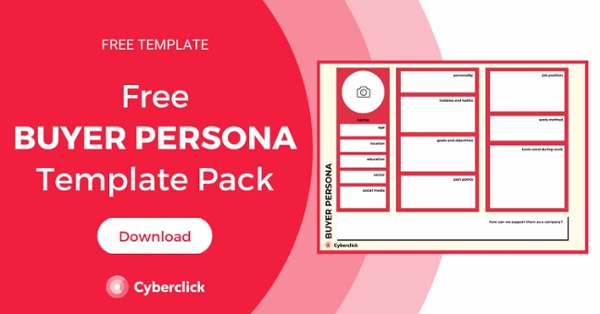- Home
- Cyberclick Academy
- Inbound Marketing
- Inbound Marketing vs. Outbound Marketing
How to create a joint strategy with Inbound and Outbound Marketing
Inbound Marketing Content
- What Is Inbound Marketing? Definition, Advantages, and Examples
- SEO in Inbound Marketing: How to Attract Quality Traffic to Your Website
- How to Create the Best Content for Inbound Marketing
- How to Use Social Media in Inbound Marketing
- What Is Lead Generation and How Does It Fit Into Inbound Marketing?
- How to create a joint strategy with Inbound and Outbound Marketing
Index
In contrast to inbound, outbound marketing involves channelling a message outwards in order to capture users. Think of inbound marketing as the equivalent of a magnet, and outbound marketing as the equivalent of a megaphone.
Defining Inbound and Outbound Marketing
Inbound Marketing
Inbound marketing is a set of techniques and tools that are used to attract potential customers in a non intrusive way. By using them, you can attract more traffic to your website, compel visitors to become leads, and guide them through the conversion funnel until they become loyal customers.
The process of inbound marketing is based on these five pillars.
- Attracting traffic. Getting visitors to your brand's website is crucial in order for the entire process to begin. For this, you can use different techniques such as SEO, SEM, content marketing, or social networks.
- Lead conversion. Here you'll seek to attract the user with content or an interesting offer in exchange for leaving their data.
- Automated marketing. Through lead scoring and lead nurturing techniques, you can filter leads into various workflows and convert them to customers.
- Loyalty. No strategy is complete without thinking about loyalty, and how to get customers to stay loyal to the brand and make repeated purchases over time.
- Analysis. Finally, you will have to measure and analyze the results based on your key performance indicators or KPIs, to adjust the strategy if necessary.
Another resource that helps differentiate the phases of the inbound journey is the conversion funnel. At the top of the funnel are all the users who visit your website and see your content, while at the bottom of the funnel (the narrowest part) are those who have been converted into clients.
Within the conversion funnel, there are three phases.
- The TOFU phase or top of the funnel. Here you'll find the people who have begun to recognize a need related to your brand and seek solutions, but are not yet ready to convert.
- The MOFU phase or middle of the funnel. In this phase, the user is considering several possible solutions for their problem or pain point.
- The BOFU phase or bottom of the funnel. The user is almost ready to convert and only lacks the final impulse.
Outbound Marketing
Now let's look at outbound marketing. Outbound strategies are based on getting your message out to a large number of people. Within the world of digital marketing, outbound marketing techniques can be seen in the form of banners, certain types of ads on social networks, or general email marketing.
Inbound vs. Outbound Marketing
Now that we've covered the basics of inbound and outbound marketing, let's look at some of the key differences between them.
Quantity vs. Quality
Outbound marketing is, by nature, quantity because its intention is to reach as many people as possible. On the other hand, its success rate is very low, since these people are not necessarily interested in the products and services offered.
In contrast, inbound marketing seeks to attract selected users. Since it is the user who has to take the first step, you can start filtering contacts who are potentially genuinely interested in your products and services.
User Experience
Outbound marketing is based on interrupting the user to distribute a message (think television commercials or banners that cover the content you want to read). Although this interruption can be effective at getting attention, it can also generate rejection. In fact, in recent years there has been a boom in ad blockers to avoid such intrusive outbound interruptions.
In contrast, inbound marketing seeks to ask the user for permission to communicate with them. It is the user who voluntarily approaches the content of the brand or even leaves their data so that you can continue to send them messages. Through an inbound technique, your marketing resources are focused those who are interested in what you have to offer.
Is Outbound a Thing of the Past?
Since the term "inbound marketing" did not emerge until 2005, it can be tempting to view outbound as outdated and inbound as modern. But this is not necessarily the case. Some digital marketing strategies, such as display advertising, are still outbound and can get the intended results.
How to Combine Inbound and Outbound Marketing
Is inbound marketing necessarily better than outbound marketing? Although statistics show that inbound strategies have a high return on investment, the truth is that this methodology is not without its limitations. For example, your inbound marketing scope will be limited to the number of interested contacts you have.
For that reason, we at Cyberclick see both strategies as compatible. In fact, they can reinforce each other. Outbound marketing has the potential to attract a large number of users, which you can capture and then include in your inbound strategy. For example, you can include information about your brand's blog within a large-scale campaign on display or in traditional media.
Whether you opt for an inbound or an outbound strategy, there are a number of general principles that should be taken into account.
- Segmentation. Whatever the scale of the campaign, you must be clear on who you are targeting and why. Based on your buyer or ideal customer, we can develop different profiles to segment the audience.
- Respect the user. Even if you opt for outbound strategies, you should always aspire not only to not bother the user, but to offer content that they want to consume.
- Automated marketing. Automation techniques can be applied to all types of campaigns to reduce human error, save time and costs, and optimize results.
- Measurement and analysis. Fundamental in any marketing plan, is being aware of what is happening and then improve your campaigns accordingly.
We hope this information helps you better understand inbound and outbound marketing, the differences between them, and how they can complement each other to achieve the objectives of a brand.
Understanding the differences is the first step on the way to launching your own inbound and outbound marketing strategy. If you are looking for ways to attract and retain customers, Cyberclick can help you with this. We can even guide the entire conversion process and optimize your results on a regular basis.
AI-Driven Business Digital Strategy Consultant at Cyberclick. Expert in ecommerce, user experience (UX), inbound marketing and CRO strategies focused on maximising conversions. She helps companies integrate AI into their business and make better digital decisions to drive growth and efficiency.
Recursos para seguir aprendiendo: ebooks, vídeos y cursos

Cyberclick

Cyberclick

Cyberclick

Cyberclick

Cyberclick



